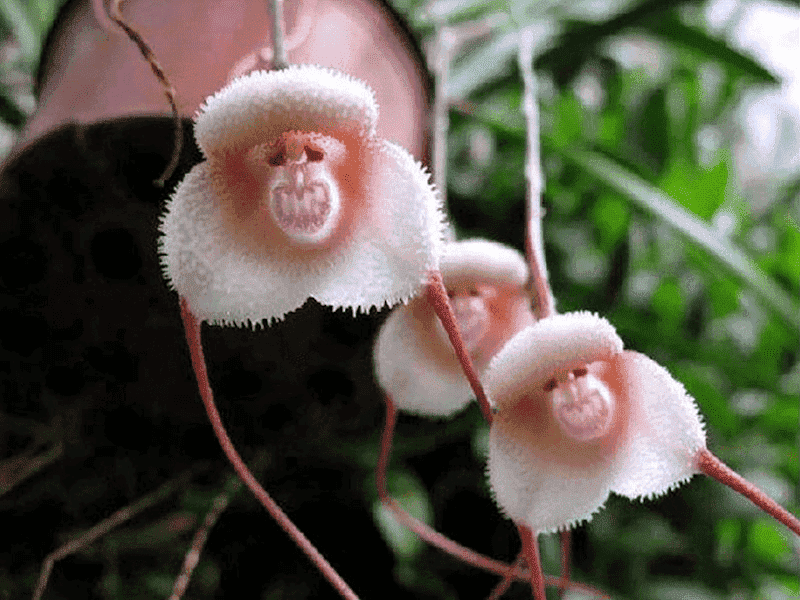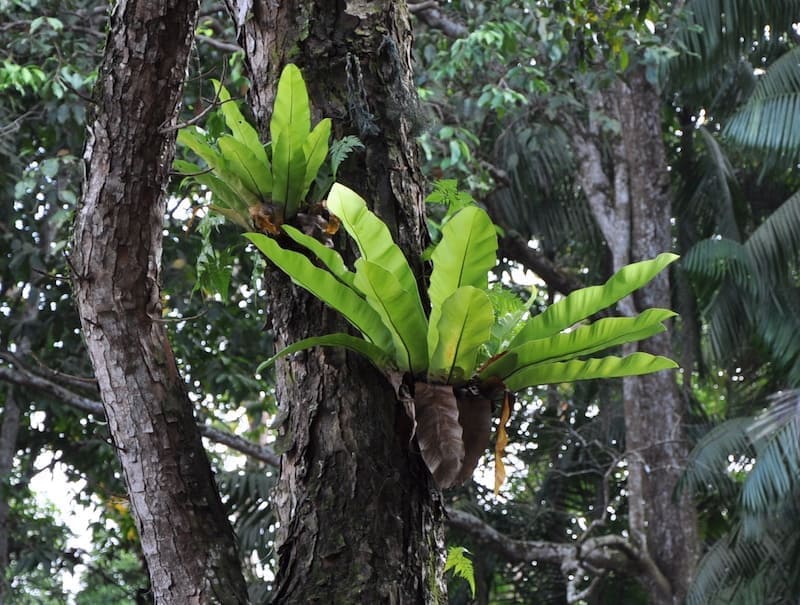Epiphytes: Nature's Hidden Gems that Grow in Food Canopies
Unlike most plants that root in the ground, epiphytes grow on other plants like trees, without taking nutrients from their hosts. Instead, they derive their nutrients from the air, rain, and debris that accumulate around them. This remarkable adaptation allows them to thrive high up in the trees that grow in temperate forests and tropical rainforests.
What are Epiphytes?
Epiphytes come in different shapes and sizes, ranging from delicate ferns and vibrant orchids to hardy bromeliads. Despite their differences, all epiphytes share a common characteristic – they do not need soil to grow. Instead, they attach themselves to other plants, using them as a support structure, while they feed on air born nutrient.
Epiphytes in Different Ecosystems - Temperate Forests and Tropical Rainforests
In temperate forests, epiphytes such as lichens and mosses commonly grow on the trucks and branches high up in the canopy of a forest. These epiphytes play a crucial role in the ecosystem providing habitat and food for a variety of organisms, including insects, birds, and mammals.
In tropical rainforests, the diversity of epiphytes is astonishing. Orchids, bromeliads, and ferns are just a few examples of the many species that thrive in these lush environments. The warm and humid conditions, coupled with the abundance of moisture and sunlight, create the perfect habitat for these unique plants to grow and flourish in tree canopies.
Importance of Epiphytes in Biodiversity Hotspots
Biodiversity hotspots are areas that support an exceptional concentration of species, many of which are endemic and found nowhere else on Earth. These hotspots, such as the Amazon rainforest and the cloud forests of Central America, are often rich in epiphyte diversity
Epiphytes play a crucial role in biodiversity hotspots around the world. They provide microhabitats for a wide range of organisms, including insects, birds, and small mammals. They also contribute to the overall health of the ecosystem by capturing and retaining moisture, reducing erosion, and cycling nutrients. Without epiphytes, the delicate balance of these unique high in the sky ecosystems would be disrupted.
Notable Tree Orchids
Orchids are perhaps the most famous and beloved group of epiphytes. With their stunning flowers and intricate designs, they have captivated the hearts of plant enthusiasts for centuries. In the world of tree orchids, there are several notable species that deserve recognition.
One of these is the Ghost Orchid (Dendrophylax lindenii), known for its ethereal beauty and elusive nature. This orchid is found in the swamps and wetlands of Florida and Cuba, where it grows high up in the tree canopies. Its delicate white flowers, which resemble ghosts floating in the air, make it a truly magical sight.
Another remarkable tree orchid is the Monkey Face Orchid (Dracula simia). Native to the cloud forests of Ecuador and Peru, this orchid gets its name from the monkey-like face that can be seen in its flower. The resemblance is so striking that it is hard to believe it is not created by a human artist.
Unique Bromeliad Species in the Tropical Rainforest
Bromeliads are another fascinating group of epiphytes that are commonly found in tropical rainforests. These plants are known for their ability to store water in their leaves, forming a natural reservoir that provides a habitat for a variety of organisms.
One of the most unique bromeliad species is the Pineapple (Ananas comosus). Although not all pineapples are epiphytic, some species of wild pineapples can grow on trees, using their roots to anchor themselves to the host plant. This adaptation allows them to access sunlight and nutrients in the crowded rainforest environment.
Another remarkable bromeliad is the Tillandsia genus, also known as air plants. These epiphytes have adapted to survive in environments where water is scarce by absorbing moisture and nutrients from the air through their specialized scales. They can be found clinging to branches, rocks, monkee puxxle trees, and even telephone wires, adding a touch of greenery in unexpected places.
Rare Fern Species that Thrive High Up in the Tree Canopy
Ferns are a diverse group of plants that can be found in a wide range of habitats, including the forest floor, rocky crevices - even tree canopies. While most ferns prefer the shade and moisture of the forest floor, some species have evolved to thrive high up in the tree canopies.
Staghorn Fern (Platycerium spp.), named for its antler-like fronds is one such species. These ferns attach themselves to tree trunks or branches and absorb nutrients and moisture from the air and rain. Their unique growth habit and striking appearance make them a favorite among plant collectors.
Another rare fern species that can be found in the tree canopy is the Bird's Nest Fern (Asplenium nidus). This fern gets its name from the way its fronds unfurl, resembling a bird's nest. It can often be seen growing in the forks of tree branches, where it collects organic matter and rainwater, creating a mini ecosystem that supports a variety of organisms.
Food Canopy - Mosses and Lichens Epiphytes
While epiphytes are commonly associated with tropical rainforests, they can also be found in other ecosystems, such as temperate forests. In these environments, mosses and lichens are common examples of epiphytes that grow on tree trunks and branches.
Mosses, with their lush green carpets and delicate structures, are often seen covering the bark of trees. They play an important role in the forest ecosystem by providing insulation, retaining moisture, and creating a microhabitat for a variety of organisms.
Lichens, on the other hand, are a symbiotic relationship between a fungus and an alga or cyanobacterium. They can be found in a variety of forms, from crusty patches to hair-like strands. Lichens are incredibly resilient and can survive in extreme environments, from the Arctic tundra to deserts. Their ability to grow on trees and rocks makes them important colonizers and pioneers in ecosystems.
Growing Epiphytes at Home - Home Gardens and Indoor Plants
Epiphytes are not limited to their natural habitats; they can also be grown at home, bringing a touch of natural beauty and uniqueness to gardens and indoor spaces. Growing epiphytes at home requires some special considerations to recreate their natural conditions.
In home gardens, epiphytes can be grown by attaching them to tree trunks, wooden boards, or hanging baskets. Orchids, bromeliads, and ferns are popular choices for home gardeners due to their striking appearance and relatively low maintenance requirements. Providing the right amount of light, humidity, and airflow is crucial for their success.
Indoor plants, such as air plants and some orchid species, can also be grown as epiphytes. These plants are well-suited to indoor environments, as they can tolerate lower light levels and lower humidity than their tropical counterparts. Placing them near windows or using artificial lighting can provide the necessary light, while misting or soaking them regularly can help maintain the humidity they require.






.png)
.png)
.png)

.png)